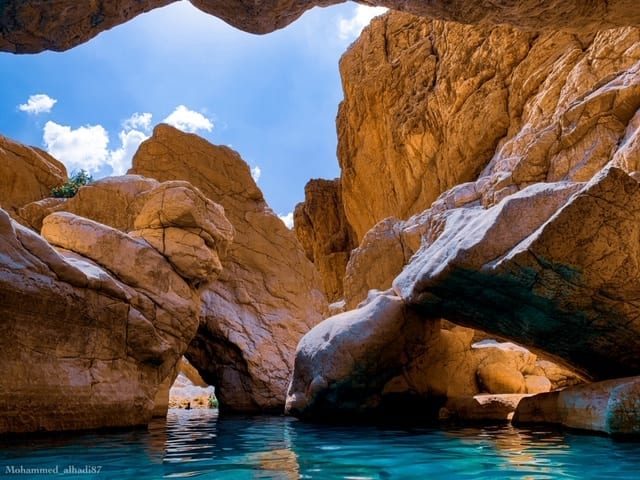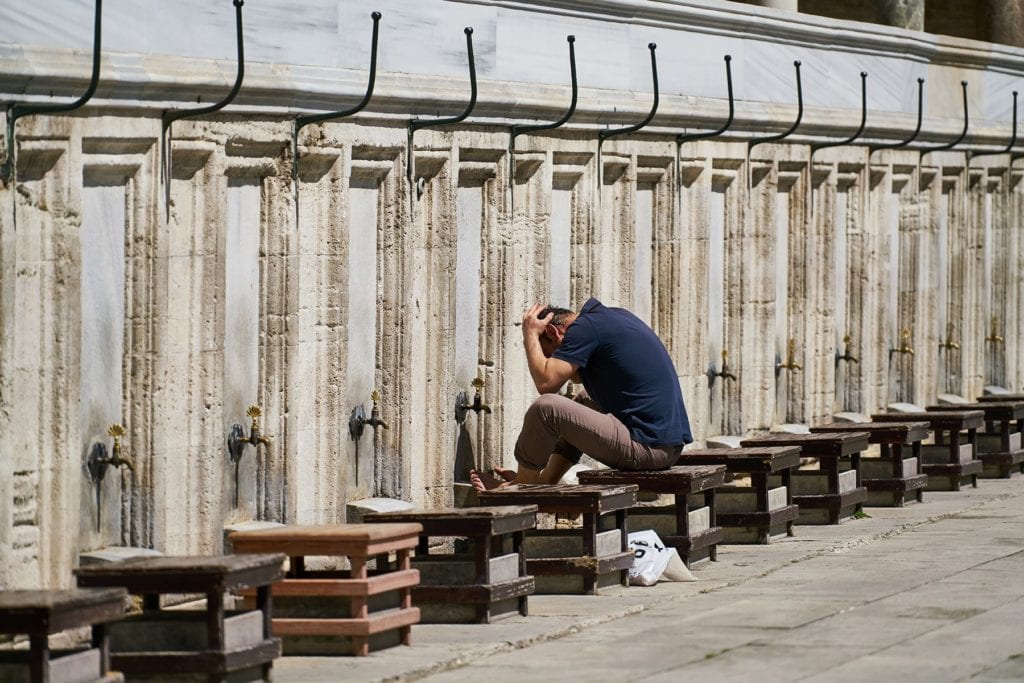The connections between religion and the city are undeniable; from the influence on the use of space with religious structures to city management. In Islamic culture wise water management has left an important mark in cities during the al-Andalus period.

In fact, Islamic law goes into detail on the right to water because it has an unprecedented significance. It represents purity in Islam and accordingly it is used to perform spiritual purification by means of the daily ablutions before prayers – a mandatory religious routine including the washing of hands and other body parts only with fresh water.
Due to this distinctively Islamic conception, the consumption of water derived from treated wastewater has been at a very low pace in Gulf cities. Desalination and groundwater aquifers are the main water sources.
Although Gulf cities are in countries with the lowest amounts of fresh water resources on the planet, they have some of the highest rates of water consumption in the world. And the percentage of reused treated wastewater is also extremely low in these cities being confined to irrigate landscaped green areas.According to the Environment Agency-Abu Dhabi, in 2017 the city reused only 5% of its treated wastewater.
Only until recently, Gulf cities are catching up with the backlog in sewage infrastructure and freeing up treated wastewater for edible crops irrigation in their countries. However, persuading the public of actually using recycled water for this purpose remains strong resistance among devote Muslim citizens.
In the city of Muscat (Oman), the wastewater operator Haya Water has been taking a very progressive approach to make religion and technology work together.
Its CEO, Hussain Hassan Ali Abdul Hussain, took the bold step to speak to the Grand Mufti, the religious authority in Oman, and went to talk to the Sheikhs, rulers of tribes. Together they have been making a case to trust treated wastewater from the city and use it in agriculture by spreading the word at mosques during prayers.

‘Our main objectives with the treatment of wastewater are, first of all, to protect ground water from the illegal dumping to nearby wadis (dry channel beds) as well as the leakage or overflow of sewage septic tanks. Both have been dramatically affecting the underground water in Oman. Secondly, we are strongly endeavoured to reduce the dependence of fresh water from desalination plants and the scarce aquifers’, explains Haya Water CEO.
Oman’s ancient groundwater channels, known as aflaj, feats of hydraulic engineering added to the UNESCO World Heritage List, are also drying up. Unregulated pumping of groundwater is depleting aquifers and causing the long-reliable channels to run dry, according to a study published at the Yale School of Forestry & Environmental Studies.
Soil salinization is adding another tragedy to arid Gulf cities. In Muscat, the extraction of groundwater beyond safe yield levels by farmers in the nearby Batinah region, the country’s most important agricultural area, has resulted in the pollution of the existing groundwater aquifers due to the intrusion of seawater and the upcoming of brackish and saline water supplies from lower aquifers.
Unsustainable practices in Gulf countries with thirsty cities and erratic rainfall threaten future water security. Wastewater collection and treatment means tapping a new water source.
‘The big challenge is to implement a well connected sewerage system in fully functioning serviced cities in the Gulf Region’, explains Haya CEO. Building a sewage network in Muscat faces the daily challenge of stumbling across cables when digging. There is no updated data about electrical cable spreads throughout the city.
In Abu Dhabi the Environment Agency is looking forward to recycling all of the discarded water of the emirate by 2020 and re-use it for irrigation purposes. 60% of the irrigation water came from water wells in 2017.
But agriculture is only a proportion of total water consumption. Treated wastewater in the advanced or fourth level can be used for indirect potable reuse in groundwater recharge of potable aquifer and surface water reservoir augmentation. This would free up more water for other water-consuming practices like ablution. Water consumption for this practice can amount to 120 liters per day per person.
The Dubai Municipality has already put an eye on this issue. In 2017 it agreed to a special tap to be installed across mosques expecting to save 80% of ablution water across the city.
Religions were not prepared to resolve water security issues of this century but Islam taught a good lesson about the right to secure a fair and balanced distribution of water to everybody.
The failure of the government and religious authorities in Gulf cities to address this right with progressive national policies and persuade the public could have severe consequences in the near future.

